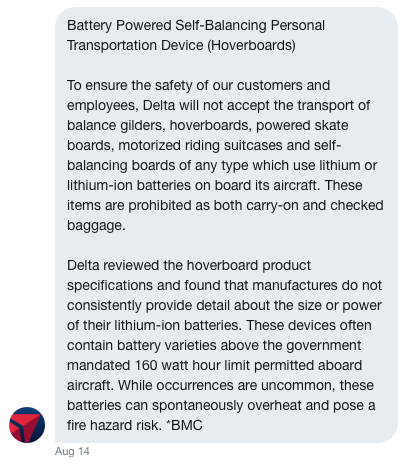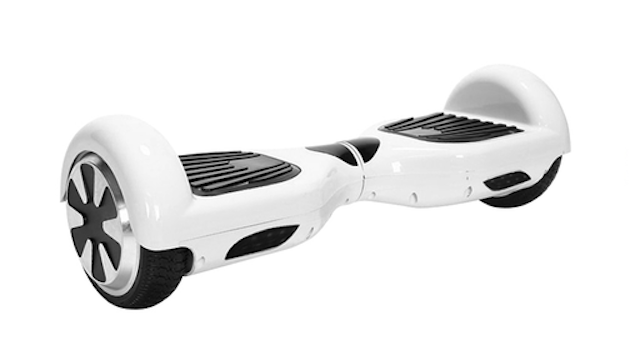I’ve always liked Delta Airlines. In my perception (perception is reality, right?), Delta has nice airplanes, friendly staff, and generally good service all the way around. I consider myself a loyal customer of Delta. With the exception of mandated price shopping for work travels, I always like to look at Delta first when I need to go somewhere. But my recent service issue with Delta caught me completely by surprise. It made me question if I had misplaced my loyalty this whole time.
The Delta Luggage Incident
It was something simple really. While coming back from my international travel, I rechecked my luggages at the New York JFK airport for the last domestic leg of my long flight home. When I reached the destination, two of my three checked-in luggages showed up on the conveyer belt, and the third one did not. I filed a claim with the Delta baggage service right away and was informed that Delta would contact me for delivering my luggage. In the days that ensued, I checked the online status of the luggage regularly. Unfortunately it never changed.

After 10 days not seeing any change and not hearing anything from Delta, I finally picked up the phone to call Delta. Having to hold for half an hour on the phone and still no one on the line, I reached out to Delta via Twitter instead. Luckily that got me a faster response than the good ol’ phone. In a few minutes of messaging with the Twitter service rep, I was informed that the status means that my luggage was in the security area. The rep asked what the luggage looked like and what was in it. I told him/her that it was a smart balance scooter (like the one you see at the top of this page). This was when I was informed of a Delta policy that I had been complete unaware of previously. The screenshot of the stated policy is shown below.

This is not an unreasonable policy. But why was it not publicized for customers to know? Even the rep did not know where the policy is located on the Delta website. What’s more, when I checked in my luggages at JFK, the counter agent asked me what was in the box. I told her what it was, and no question was raised about it not being allowed. Back to Twitter, I asked the rep if we could get the luggage back from JFK or pay to have it shipped to us, the rep said in such situations the things are thrown away right away. Basically there’s no way to get my thing back. The outcome of this whole incident was a double disappointment, me in Delta and my daughter in not being able to even try her new scooter once.
Airline baggage horror stories abound. Mine was perhaps no exception to the many worse stories out there. But does each of these stories have to turn into a customer service nightmare and have to cost a lost customer? Absolutely not. In my opinion, Delta could have done a much better job with what happened to me and could have earned a deeper level of loyalty rather than the bitterness I now feel toward them. Below are at least three things that they should have done instead.
Proactive Problem Solving
Mistakes happen. But just like preventive medicine is much better than trying to fix a bigger problem later, Delta could have established a much more robust proactive system to deal with such issues. Once a luggage enters a mishandled status, the system should have a built-in trigger that flags a problem to the company when the luggage status does not change for, say, 2 or 3 days. Perhaps a call should be made to the customer to indicate that the problem has not been forgotten. To the extent possible, the company should also further investigate the situation to find out what happened and to provide a reasonable explanation to the customer. To me, ten days without any communication effort is unacceptable from a customer experience perspective. The silence sends a very loud message: ”We don’t care about you and your problems.”
Even before that, they could have avoided the problem altogether by notifying me as soon as they found out that the scooter could not get onto the plane. The company had my contact information, including my email address and my mobile number. A simple call or text message would have alerted me to the problem, and I would have tried to figure out a way to deal with the issue. Even if my decision was to abandon the luggage, it would be MY choice. My guess is that these various operations reside in different silos that do not communicate well with each other. So when a problem occurs in one area, it does not connect with other areas. Today we hear many companies talk about creating the best customer experience or delighting customers. But to create a seamless customer experience, the company needs to have a seamless backend system to support that.
Customer and Employee Education Is Important

Now onto the rule. I really have no gripes with the rule, truly. Companies have to operate on reasonable policies to protect themselves and protect their customers. But it is companies’ responsibility to educate their customers about these policies. Not long boring 3-hour long classes, but a reminder here and there that new policies have been established and that these things cannot be brought on board. The rules may seem straightforward to the company or to those super-travelers. But do not make assumptions about what customers know or don’t know. Leverage those email newsletters. Instead of trying to sell me another flight that I don’t need at the moment, tell me these useful things so that I can be a wiser traveler. It’ll benefit both the customer and the company.
Even more importantly, companies need to educate their frontline employees of these policies. They are the first line of defense against service problems. If this were caught earlier in the process while I was checking in my luggage, none of the later problems would have happened. Again, I would have had the choice of what to do with my luggage, and I would not have blamed the airline for not handling it.
Solve Customer Problems in One Step
A few weeks ago, I had to contact Delta for requesting miles on another airline’s flight. I provided the needed information and Delta had the rest of the information in the system, yet it took two separate contacts sending a redundant document before the problem was resolved. With the more recent luggage incident, while the Twitter rep was helpful in identifying what had happened to my luggage, when it came time to request the company to address the problem and provide compensation, the rep referred me to the company’s website for filing a formal request. Such disconnects in the customer service process do not help create a good customer experience. Does @Delta on Twitter not represent Delta? It takes time for people to build rapport with each other. I’m finally in the groove talking to one person, and now I am switched to another channel that requires me to explain myself all over again. While these additional steps I need to take as a customer may seem like small inconveniences, for a customer it shows the incompetence of the company and again the message that “we don’t care”. A truly good customer experience should be like gliding across a smooth surface to reach a frictionless state.
This particular incident made me experience first hand how fragile customer loyalty is. Any company who is lucky enough to enjoy the loyalty of their customers should never take it for granted. Maintaining and growing loyalty is an ongoing process. Being proactive in that process is much more important than trying to patch problems later.
Acknowledgement: The feature image of the smart balancing scooter is provided by Simakovarik [CC BY-SA 4.0 ], from Wikimedia Commons
